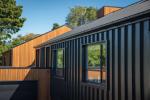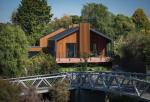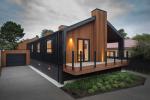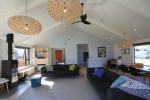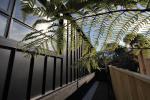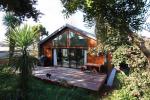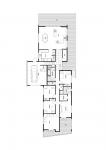RECOVERING FROM THE EARTHQUAKE...AND THEN A FLOOD
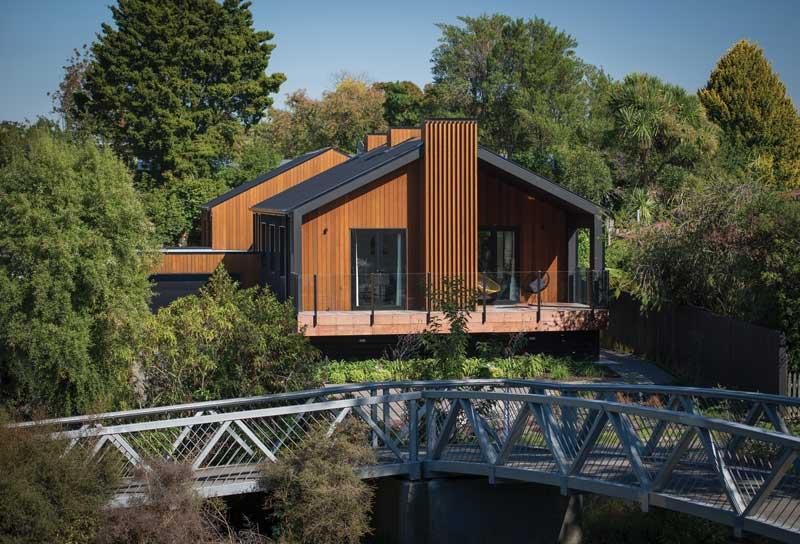
Like a lot of Christchurch homeowners, Phil Grey and his family were left in limbo when the earthquakes hit the city in February 2011.
The family bungalow and section beside the Heathcote River was substantially damaged beyond a full repair and was deemed a rebuild.
Phil, an architect with Warren and Mahoney, says, “After the earthquakes, we sustained a lot of damage to the house foundations and the site changed dramatically with natural water springs appearing.”
“Initially we didn’t know whether to stay here or move on but in the end, we decided to demolish the house, repair the damaged land, deal with layers and layers of bureaucracy and took the opportunity build a bigger house for our family of five.
“We knew that there would be risks in building on this particular piece of land but it made sense financially and especially with the location by the river.
So the family home of 15 years – a 110sq m, timber-framed bungalow - was demolished and work began on getting the section ready for a new 240sq m home for Phil, his wife and three daughters. “The brief evolved purely from what was required: four bedrooms, a separate lounge for the kids and the living spaces at the rear of the property, which is west-facing,” says Phil. “With a long, narrow site the house was always going to have a linear orthogonal form.”
To prepare the site for the house, Phil says they had to create a 700mm-deep gravel raft foundation base. The remediated land was so effective and hard, that the builders had to use a Kango hammer to dig holes for the formwork. “We had to excavate all the poor soil and install a series of drainage pipes under the raft as there are permanent springs that needed to be diverted. A de-watering system was installed during construction that was so effective it drained all the adjacent properties for a period of time. On top of the gravel raft was laid a 150mm-thick reinforced concrete slab with the house sitting on 1.2m-tall piles set into the concrete slab.
“Specific council requirements meant that we had to raise the house floor level as the area was now in a Flood Management Area - the river seems to flood more post-earthquake and by raising the house, it allows for the house to remain liveable should the predicted global warming increase water levels,” says Phil. “Should there be another earthquake and the house moves or settles it can be consistently levelled relatively easily because all the piles are uniformly tied into the slab.” Phil says raising the house did create complications such as factoring in shadowing of neighbouring houses and working out the necessary setbacks from the boundary. “Apart from that, we located the front of the house where the old house was to maintain an alignment with the existing street scape.
Designed in two gabled pavilions with the entrance in the middle of the two, the house has four bedrooms and the kids lounge in “Part A” on the street frontage, while “Part B” has the kitchen, dining and living space. A recess in the house’s east façade creates space for a sheltered, glass-balustraded deck facing the street outside the master bedroom, which has a walk-in wardrobe and ensuite.
A deck begins at the entry between the two pavilions and runs down the side of the house, wrapping around the west facing living area.
On the opposite side of the house to the entryway is an attached, flat-roofed garage. Phil says the two pavilions have a different façade look to define the function. “The front pod is a full wrap in Espan® with cedar-clad gables while the pod at the back is cedar-clad with an Espan® roof because I wanted to create some differentiation in the areas rather than just have a monolithic black form.” He adds, “Because it’s a relatively long house, I wanted to move away from horizontal weatherboards and give it some verticality with the cedar cladding and the Espan®. “And the wide metal tray for the cladding and roofing gives a unique, timeless look that is comparatively maintenance-free.”
The front pavilion also has two chimney-like light wells and a vertical cedar battened façade that breaks up the east façade “Again, it breaks up the roofline and there’s nothing better than having natural light into a home,” says Phil. “There’s a light shaft up to the overhead glazing, which is 900mm square so it gives you a decent view that goes up from the corridor and you can look up to the sky. “
In the rear pavilion Phil says he chose not to opt for an open plan kitchen/living area. “My kids like cooking and if you have an open plan kitchen you have to keep it tidy,” he says. “With an open plan kitchen you are also restricted with wall space for cupboards.” The living has a skillion roof with exposed beams as a point of difference.
Phil says while he wasn’t aiming for a super energy-efficient home, he opted for 150mm-thick framing to accommodate extra insulation. “It also helped with the design of the windows as they are ‘punched in’ to the facade. As well as thermally broken double glazed windows, the house has hot water heat pump-powered radiators in the rooms and a low-emission woodburner in the main living space. As Phil explains, underfloor heating wasn’t an option with the house due to the timber floor construction.
While Phil designed the home to withstand inundation of the site, he wasn’t expecting it to be tested so soon with a big flood coming through in July. “It was quite scary; the old house wouldn’t have coped with it and it would have been touch and go if the house had been any lower.”

